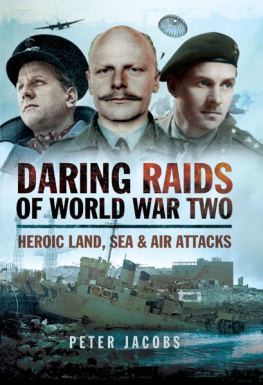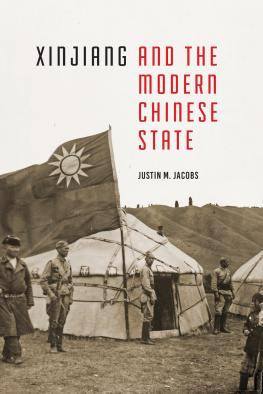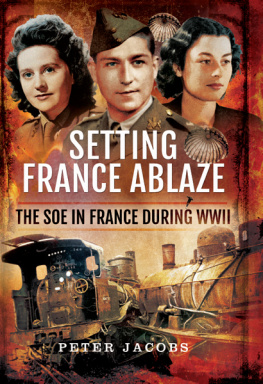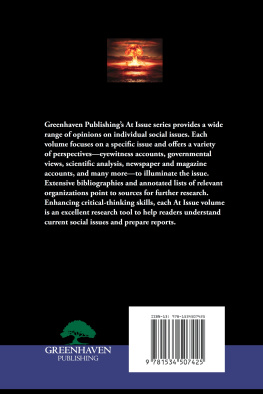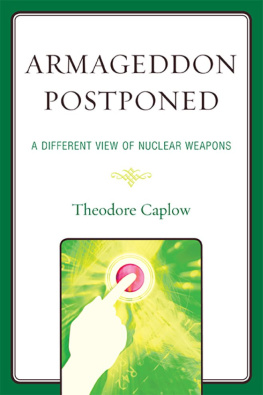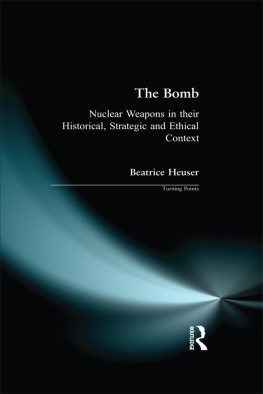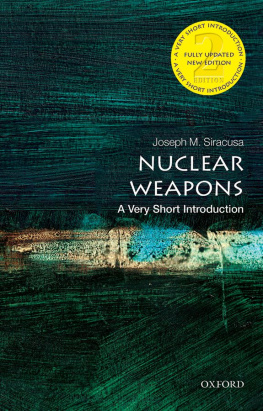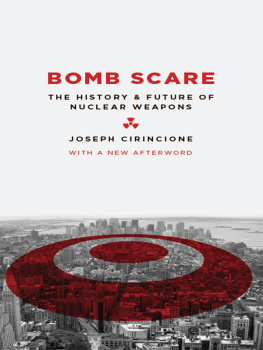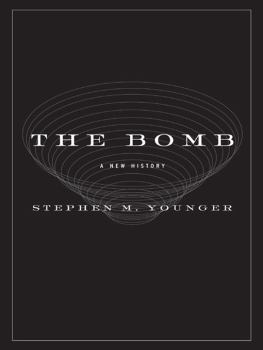Filling the Hole
in the Nuclear Future
AsiaWorld
Series Editor: Mark Selden
This series charts the frontiers of Asia in global perspective. Central to its concerns are Asian interactionspolitical, economic, social, cultural, and historicalthat are transnational and global, that cross and redefine borders and networks, including those of nation, region, ethnicity, gender, technology, and demography. It looks to multiple methodologies to chart the dynamics of a region that has been the home to major civilizations and is central to global processes of war, peace, and development in the new millennium.
Titles in the Series
Chinas Unequal Treaties: Narrating National History , by Dong Wang
The Culture of Fengshui in Korea: An Exploration of East Asian Geomancy , by Hong-Key Yoon
Precious Steppe: Mongolian Nomadic Pastoralists in Pursuit of the Market , by Ole Bruun
Managing Gods Higher Learning: U.S.-China Cultural Encounter and Canton Christian College (Lingnan University), 18881952 , by Dong Wang
Queer Voices from Japan: First Person Narratives from Japans Sexual Minorities , edited by Mark McLelland, Katsuhiko Suganuma, and James Welker
Yoko Tawada: Voices from Everywhere , edited by Douglas Slaymaker
Modernity and Re-enchantment: Religion in Post-revolutionary Vietnam , edited by Philip Taylor
Water: The Looming Crisis in India , by Binayak Ray
Windows on the Chinese World: Reflections by Five Historians , by Clara Wing-chung Ho
Tommys Sunset , by Hisako Tsurushima
Lake of Heaven: An Original Translation of the Japanese Novel by Ishimure Michiko , by Bruce Allen
Imperial Subjects as Global Citizens: Nationalism, Internationalism, and Education in Japan , by Mark Lincicome
Japan in the World: Shidehara Kijuro, Pacifism, and the Abolition of War, Volumes I and II , by Klaus Schlichtmann
Filling the Hole in the Nuclear Future: Art and Popular Culture Respond to the Bomb , edited by Robert Jacobs
Filling the Hole in the Nuclear Future
Art and Popular Culture
Respond to the Bomb
Edited by Robert Jacobs
lexington books
A division of
Rowman & Littlefield Publishers, Inc.
Lanham Boulder New York Toronto Plymouth, UK
Published by Lexington Books
A division of Rowman & Littlefield Publishers, Inc.
A wholly owned subsidiary of The Rowman & Littlefield Publishing Group, Inc.
4501 Forbes Boulevard, Suite 200, Lanham, Maryland 20706
http://www.lexingtonbooks.com
Estover Road, Plymouth PL6 7PY, United Kingdom
Copyright 2010 by Lexington Books
All rights reserved. No part of this book may be reproduced in any form or by any electronic or mechanical means, including information storage and retrieval systems, without written permission from the publisher, except by a reviewer who may quote passages in a review.
British Library Cataloguing in Publication Information Available
Library of Congress Cataloging-in-Publication Data
Filling the hole in the nuclear future : art and popular culture respond to the bomb / edited by Robert Jacobs.
p. cm. (AsiaWorld)
ISBN 978-0-7391-3556-3 (cloth : alk. paper) ISBN 978-0-7391-3557-0 (pbk. : alk. paper) ISBN 978-0-7391-3558-7 (electronic)
1. Arts and societyUnited StatesHistory20th century. 2. Arts and
societyJapanHistory20th century. 3. Art and nuclear warfareUnited States. 4. Art and nuclear warfareJapan. 5. Popular cultureUnited StatesHistory20th century. 6. Popular cultureJapanHistory20th century. 7. Atomic bombSocial aspectsUnited States. 8. Atomic bombSocial aspectsJapan. I. Jacobs,
Robert A., 1960
NX180.S6F55 2010
700'.4581dc22 2009050432
The paper used in this publication meets the minimum requirements of American National Standard for Information SciencesPermanence of Paper for Printed Library Materials, ANSI/NISO Z39.48-1992.
Printed in the United States of America
For my wife Carol.
Acknowledgments
This book is the result of a research project funded by the Hiroshima Peace Institute (HPI) and the citizens of Hiroshima, Japan. The book would not have been possible without the hard work and support of the entire HPI administrative staff, but specifically it is very much the result of the tireless professional commitment of Michiko Yoshimoto. From the first day of the research project until the placing of the last period mark at the end of the manuscript, Michiko never stopped working to make this book as perfect as possible.
The book began as a unique research project at HPI, bringing together both scholars and artists in a collaborative effort centered on the iconography of nuclear weapons. Meeting twice, in Chicago and also in Hiroshima, project members shared ideas and critiqued each others work. HPI President Motofumi Asai addressed the group to stress his sense of the importance of our work, and lent the full support of HPI throughout the research and production periods. Hiroko Takahashi joined us for many of the workshop sessions and offered critical insights at key junctures. Atsuko Shigesawa contributed the translations of the two manga chapters. Kazumi Mizumoto helped to bring the work of essential participants to the groups awareness. Narayanan Ganesan and Sung Chull Kim also offered advice on how to organize, manage, and complete the tasks of such an unwieldy group of contributors.
Mark Selden oversaw the process of guiding the work generated in our research project into the holistic form of a coherent book. Marks familiarity with the disparate topics; his support for the unusual structure of scholarship, manga, photographs, and poetry in one book; and his editorial guidance are clearly visible throughout the book. Michael Sisskin at Lexington Books has offered both patience and guidance in bringing the book to fruition. I am grateful for his commitment to the book and its unusual format, and for the strong support he and Lexington have shown for this work.
This book contains the work of a group of scholars and artists who found productive and new ways to work with each other. Coming from different disciplines, and even from different worlds, their common devotion to the issues of nuclear weapons and to the work of their fellow collaborators is an inspiration. Crossing barriers of language and training, they all worked for the quality and success of each others work. Our meetings together were productive, and extremely fun. Special thanks go to Jerome Shapiro, Margot Henriksen, Tom Altherr, and Brian Johnson, who attended many of the workshop sessions and contributed valuable insights, many of which have found their way into the final work.
And finally, my thanks go to my familyKaya, Ocea, Gwynne, Levi, Yolanda, Carol, and Murielwhose support provides the ground on which I walk every day.
Foreword
Hiroshima Story *
Tom Engelhardt
Even though we promptly dubbed the site of the 9/11 attacks in New York City Ground Zeroonce a term reserved for an atomic blastAmericans have never really come to grips either with the atomic bombings of Hiroshima and Nagasaki or the nuclear age they ushered in.
There can be no question that, as the big bang that might end it all, the atomic bomb haunted Cold War America. In those years, while the young watched endless versions of nuclear disaster transmuted into B-horror films, the grown-ups who ran our world went on a vast shopping spree for world-ending weaponry, building nuclear arsenals that grew into the tens of thousands of weapons.
When the Cold War finally ended with the Soviet Unions quite peaceful collapse, however, a nuclear peace dividend never quite arrived. The arsenals of the former superpower adversaries remained quietly in place, drawn down but strangely untouched, awaiting a new mission, while just beyond sight, the knowledge of the making of such weapons spread to other countries ready to launch their own threatening mini-cold wars.



